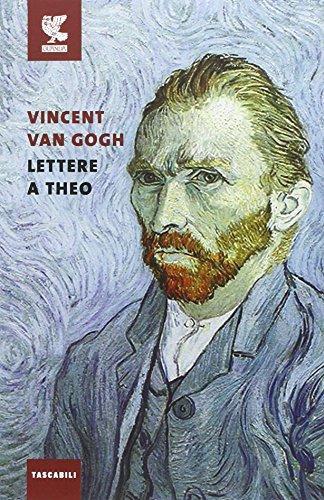Vincent Willem van Gogh (Dutch: [ˈvɪnsɛnt ˈʋɪləɱ vɑŋ ˈɣɔx] (listen); 30 March 1853 – 29 July 1890) was a Dutch Post-Impressionist artist who emerged as one of the most famous figures in the history of Western art after his death. In only a decade, Van Gogh created a prolific body of more than 2,000 works of art. Most of his 1,100 drawings and works on paper and nearly 900 oil paintings were produced during the last two years of his life. Van Gogh's landscapes, still lifes, portraits, and self-portraits are characterized by vibrant contrasts of complementary colors and expressive brushwork, and his abstract, linear planes were inspired by the Japanese prints Van Gogh collected and admired. His innovations contributed to the foundations of modern art. Van Gogh's images often reflect personal symbolism, experiences, and emotions he discussed in correspondence with family and friends. He expressed a desire to communicate joy and comfort through his art and aspired to gather a community of like-minded artists in southern France. Van Gogh did not achieve commercial success in his lifetime and relied on financial support from his brother, Theo van Gogh. His life was shaped by severe depression and episodes of acute psychological …
Vincent van Gogh
Dettagli autore
- Nascita:
- 30 Marzo 1853
- Morte:
- 29 Luglio 1890
Collegamenti esterni
Vincent Willem van Gogh (Dutch: [ˈvɪnsɛnt ˈʋɪləɱ vɑŋ ˈɣɔx] (listen); 30 March 1853 – 29 July 1890) was a Dutch Post-Impressionist artist who emerged as one of the most famous figures in the history of Western art after his death. In only a decade, Van Gogh created a prolific body of more than 2,000 works of art. Most of his 1,100 drawings and works on paper and nearly 900 oil paintings were produced during the last two years of his life. Van Gogh's landscapes, still lifes, portraits, and self-portraits are characterized by vibrant contrasts of complementary colors and expressive brushwork, and his abstract, linear planes were inspired by the Japanese prints Van Gogh collected and admired. His innovations contributed to the foundations of modern art. Van Gogh's images often reflect personal symbolism, experiences, and emotions he discussed in correspondence with family and friends. He expressed a desire to communicate joy and comfort through his art and aspired to gather a community of like-minded artists in southern France. Van Gogh did not achieve commercial success in his lifetime and relied on financial support from his brother, Theo van Gogh. His life was shaped by severe depression and episodes of acute psychological distress. Van Gogh committed suicide at the age of 37.The son of a Dutch Reformed minister, Van Gogh was serious, quiet and thoughtful as a child. He began drawing at an early age and as a young man worked as an art dealer, often traveling, but became depressed after he was transferred to London. He turned to religion and spent time as a Protestant missionary in southern Belgium. He drifted in ill health and solitude before taking up painting in 1881, having returned home to his parents. His younger brother Theo supported him financially; the two kept a long correspondence by letter, which, when published, contributed to his growing posthumous reputation as an artist. His early works, mostly still lifes and depictions of peasant laborers, contain few signs of the vivid color that distinguish his later work. In 1886, Van Gogh moved to Paris where he met members of the avant-garde, including Émile Bernard and Paul Gauguin, who were reacting against the Impressionist sensibility. As his work developed he created a new approach to still life and landscape. His paintings grew brighter as he developed a style that became fully realised during his stay in Arles in the South of France in 1888. During this period he broadened his subject matter to include series of olive trees, wheat fields and sunflowers. Van Gogh suffered from mental illness, psychotic episodes, delusions and, although he worried about his mental stability, often neglected his physical health, did not eat properly, and drank heavily. His friendship with Gauguin ended after a confrontation between the two when, in a rage, Van Gogh severed a part of his own left ear with a razor. After, he spent time in psychiatric hospitals, including a period at Saint-Rémy. Once he discharged himself and moved to the Auberge Ravoux in Auvers-sur-Oise near Paris, he came under the care of the homeopathic doctor Paul Gachet. His depression persisted and on 27 July 1890, Van Gogh is believed to have shot himself in the chest with a revolver, dying from his injuries two days later, with his brother Theo at his side. Van Gogh's paintings did not sell during his lifetime, during which he was generally considered a madman and a failure, although some collectors recognized the value of his work. His fame came only after his death. Scholars increasingly have recognized the role of Vincent's sister-in-law Jo Bonger-Van Gogh for shaping and promoting his reputation as an artist. He evolved in the public imagination into a misunderstood genius. His reputation grew in the early 20th century as elements of his style came to be incorporated by the Fauves and German Expressionists. He attained widespread critical and commercial success over the ensuing decades, and is remembered as an important but tragic painter whose troubled personality typifies the romantic ideal of the tortured artist. Today, Van Gogh's works are among the world's most expensive paintings to have ever sold, and his legacy is honoured by the Van Gogh Museum established by the Dutch government in Amsterdam, which holds the world's largest collection of his paintings and drawings. They were originally held by his brother Theo and inherited by Theo's wife, Jo Bonger-Van Gogh, who shrewdly kept Vincent's best works.
